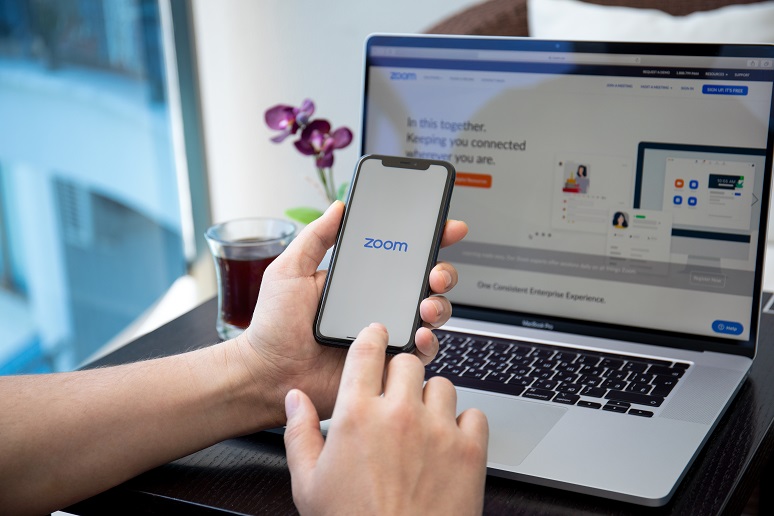At Zoomtopia yesterday, a primary focus was on the Zoom for Home initiative, which is paying close attention to delivering Zoom experiences inside a person’s residence. Before COVID-19 hit, Zoom’s focal point was predominately honed-in on Zoom Rooms for businesses and business phone devices. Personal devices were only a small component as the vast majority of those users have some form of personal computer or tablet/mobile to use as an endpoint.
Amid stay-at-home orders and work/play/school from home, Zoom became the predominant adopted platform for the non-traditional video and collaboration use cases. The pandemic brought millions of new consumer video users onto the platform and into the world of virtual meetings. However, this group demographic is very different from the business adopter category.
The traditional adopters of video/collaboration/teams in business organizations are knowledge workers. As described in the PKE Consulting white paper, “
Knowledge, Information and Service Structure,” these workers manage their personal business process, use personal productivity software (MS Office, Google), and almost always have an assigned or personal computer for business use.
Because knowledge workers have an assigned computer, they can join video meetings using that personal device. But for a large percentage of the millions of new consumer Zoom users, they don’t have a good personal computer with video/audio capabilities. Or, they cannot configure the system for full bi-directional audio and video. Many of these users are using tablets or mobile phones or joining by phone and watching on a browser. For others, the single PC is serving multiple family members, often with conflicting events.
This example encompasses the Zoom for Home initiative. While it can be used by the business user, often the same use case can be generated by a larger monitor and camera using the existing PC. Therefore, to date, the crop of Zoom from Home products on the company website is business room focused, with multiple video bars and an integrated large room screen from DTEN. In the Zoomtopia keynote session, a new set of home Zoom devices was covered, Zoom is being included as an on-board app feature in Portal from Facebook, Amazon Echo Show, and Google Nest Hub Max home device solutions. HP is also introducing a new all-in-one home solution that includes natively integrated Zoom capability. Even the product naming suggests a divergence from the pure business focus. By using “Zoom for Home” versus “Zoom for Work at Home”, the offers immediately expand to the millions of Zoom consumers in the market. And to the relatively large percentage of that Zoom user base that does not have video or getting poor quality through their device.
The question is whether there is a market for consumer video devices. While I don’t believe that many of these consumer attendees will buy a DTEN monitor/touch screen or a video bar for their Zoom meetings, if a consumer is attending Zoom meetings regularly for their non-work pursuits (school, hobby, church, etc.), having Zoom meetings as a native integration and device feature might impact an impending consumer device purchase. Having Zoom integrated and easily available without worry might drive a buying preference for a device already under purchase consideration (as the marketing people say). For personal devices like the Portal, Echo, or Nest, it’s clearly already a buying preference option to include consumer video for an in-home purchase. The decision to buy a home node/automation device with or without a screen may be driven by the Zoom video value of having the screen. For the HP PC or tablet, an integrated Zoom button would make it simple for the less-sophisticated user.
I expect a big response to Zoom for Home will be from the smart TV folks like Samsung, LG, and Sony. Samsung put cameras into their TVs many years ago, but no one could quite figure out why you would need them. Zoom is why. I expect we will see several announcements later this year of “Zoom on Board” on consumer televisions, which is exactly the kind of new feature that the television industry has been looking for product differentiation and driving upgrades. I believe that Zoom is in a unique position as it’s not competitive or even adjacent to the television manufacturers. Unlike Google or Microsoft, or even Amazon, Zoom has no significant market overlaps with the major television manufacturers. Putting Zoom into a television and encouraging Zoom use seems to be a very complementary path for the television community to follow.
I believe this has the potential for two major changes for Zoom. As television and hardware manufacturers introduce Zoom into their platforms, the ability of Zoom to drive component choices (processor and GPU) for optimized video processing may drive new functionality (think Together Mode) and quality/bandwidth optimizations. The much larger change may be the Zoom foothold in meetings turning into a Zoom foothold in the home for general interactions. If a reasonable percentage of homes have a Zoom integrated device, does having a Zoom-based contact center make sense? What if Zoom is available as an integrated option on your new Samsung Smart refrigerator? Imagine standing in front of that refrigerator and starting a family meeting, sharing the contents, and planning dinner via Zoom.
Over the past 30 years, there have been multiple “consumerization” of a category of business IT devices. The original PCs used in business weren’t from IBM, HP, or Sperry. They were generally consumer devices. The business providers tried to follow, but in the end, the new consumer-oriented vendors won the PC market. Similarly, the mobile phone market was won by consumer focus, not the Blackberry business focus. In the emerging world of remote interaction, the potential of a major consumer adoption disruption seems to be increasingly high. While the Covid driven acceleration of adoption of the video/meetings/teams paradigm in business has been breathtaking, the consumer impact is even more extreme. Satya Nadella, Microsoft CEO says “We have seen two years’ worth of digital transformation in two months”. In the consumer space, the adoption acceleration is probably five to 10 years. The results of these changes on the market and platform usage may be major factors in the coming years.
I will be monitoring the availability and sales of Zoom capable consumer endpoints. If there is a major upswing in adoption of these, it may signal the beginning of a fundamental change in the market. While most business organizations may continue to use other UCaaS platforms like MS Teams and Cisco Webex for internal and close partner collaboration, it may be that consumer video interaction may have a strong Zoom preference.










